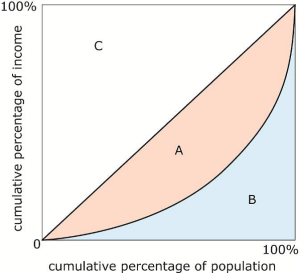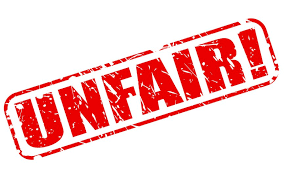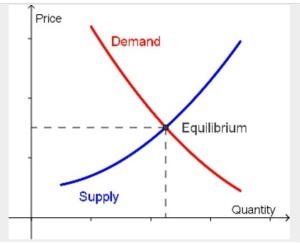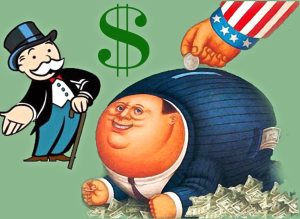Many years ago, as an undergraduate studying Economics at NUS, I decided on a whim to take up a module titled “Social Inequality: Who gets ahead?“.
It was a highly interesting subject that discussed about Social Inequalities, its implications, and the various theories on the subject. And while I must admit that I have lost touch with the more technical and highly theoretical aspects on the subject, I became more informed about Inequality as a concept.
Fast forward many years later, I was pleasantly surprised to see a major commentary piece by Prof Vincent Chua, the key lecturer to the Social Inequalities module at NUS, on the Straits Times titled “Disrupting social circles to boost cohesion“.
While certainly less overt in the last decade or so, publishing a piece on class divisions in the Singaporean society is seldom see on the Straits Times, due to its perceived sensitive nature. Not surprising this has sparked a lively debate among many Singaporeans of late.
A quick poll with my students revealed a generally shallow appreciation of Social Inequalities (i.e. they know the world is unfair, but not much beyond). There are a couple of reasons to this:
- They are students, and have not yet been exposed to the “big bad world”.
- In much of basic Economics, Inequality is often treated as a minor inconvenience to the market economy, and little discourse is provided beyond that.
Most of us are acquainted with the subject. One obvious observation is how many of us often attempt to classify people as “rich” or “poor”.
Yet, Inequality is a much broader concept than this – it can involve individuals and even nations. But it may not need to be inevitable and understanding its formation is key to helping us build a better world.
What is Inequality?
Inequality is a very broad topic and generally refers to “disproportionate” (some will call it unfair) distribution of resources.
For the purpose of today’s discussion, we will discuss about:
- Economic Inequality – the difference found in various measures of economic well-being among individuals in a group, among groups in a population, or among countries.
- Social Inequality – where resources in a given society are distributed unevenly, typically through norms of allocation, that engender specific patterns along lines of socially defined categories of persons.
Although appearing as two distinct categories, they are in reality, inextricable in analysis from each other. The key differentiation between them lies in the analysing perspective:
- Economic Inequality focuses on resource allocation.
- Social Inequality focuses on class divide (class here being loosely defined as socially engendered categories of people).
The GINI Coefficient.
The most recognised quantifiable measure at the national level is the GINI coefficient.
The GINI coefficient is expressed as a single number, ranging between 0 and 1, with “1” being absolutely unequal and “0” being absolutely equal.
The GINI coefficient is calculated by measuring the cumulative income or wealth deviations between a situation where total wealth is equally distributed in the country, and the actual situation.
This measurement concept is best understood graphically:
In the above graph, the ideal equal wealth distribution situation is represented by the straight 45 degree line.
The actual wealth distribution is represented by the curved line below the straight one, separating the area under the 45 degree line into A and B. The x-axis represents the population percentile in increasing wealth order, the poorest of the population on the left, and the richest to the right.
As you might imagine, in an equal distribution society, the next person should add an equal percentage of wealth, causing the line to increase linearly (hence the 45 degree line as the reference).
The line depicting the actual situation is however, curved and increasing at an increasing rate because as we go from left to right, the next person adds an increasing percentage of wealth, causing the line to increase in steepness.
In theory therefore, we could measure the Inequality by comparing the relative size of area “A” against that of “A+B”. This is the basis behind calculating the GINI Coefficient as: A / (A+B).
In a perfectly equal society therefore, A would be 0, so the GINI Coefficient would be 0.
Conversely, in a perfectly unequal society, B would be 0, so the GINI Coefficient would be 1.
Other ways to measure Inequality.
Of course, Inequality has many facets of which the GINI Coefficient captures only one well (Material Inequality). It is used mostly to measure Economic Inequality and frequently quoted to the masses as it packages crucial information about resource allocation patterns succinctly. Students should be well-versed at least with interpreting the GINI Coefficient.
But Inequality goes beyond resource allocations. An Unequal Society may manifest for example, in Unequal:
- Opportunities – possible paths an individual or even country might take.
- Power – the ability to coerce or influence people around you effectively.
- Networks – how “useful” the relationships you have with the people around you.
- Inheritance – how persistent Inequalities can be over generations.
This list is by no means exhaustive. Social Inequality studies Inequality from the perspective of social engenderment. The picture below best sums this concept up:
Social Inequality manifests itself as social stratification and class divides. This is why Vincent’s study focused on observations about how well people in Singapore mix with others from “different classes”. You can read more about his work here.
I must be clear that Social Inequality is not about ruling out the possibility of biological origins if any. You may think of it as a specific lens through which we view Inequality.
In fact, the underlying factors are intertwined, be it Biological or Social, and it’s best to keep a pluralistic view on the subject.
Why should we be concerned about Inequality?
In Economics, Inequality is often discussed as a Market Failure.
This is because a well-functioning market is usually recognised to be:
- Efficient (Allocatively, Productively and Dynamically).
- Equitable (Resources are distributed “fairly”).
As an Economics concept therefore, Inequality is recognised to be a problem (unfair resource allocation), which demands corrective measures to achieve optimal societal outcomes.
But Inequality is not just a problem in high-level principles (or morals for the matter) alone.
Inequality is a major concern also because:
- A highly stratified society is usually an unstable and unhappy one. Brazil is an extreme example where staggering Inequality has led to high crime rates and violence.
- Class divides usually worsen with time in the absence of external interventions due to network effects, as discussed by Vincent Chua, only serving to worsen the above point.
- Inequality often accumulates and perpetuates across many generations. It isn’t just about the rich getting richer – often, the poor gets poorer too without external intervention.
- In a market economy, resource allocations will be skewed in favour of those who are more willing and able to pay (i.e. the rich). Huawei for example, has switched its focus to making premium and mid-range hand-sets, ditching its low-range roots.
- Inequality can even occur at an international level – it has been recognised for example, to be perpetuated by trade patterns and even worsened by globalisation.
In summary, it is a very bad idea to ignore Inequality if you are a policymaker (a benevolent one that is). This is because it tends to bring unpleasant secondary effects to people, and almost always worsens over time if left as is.
So can Inequality ever be bridged or overcome?
We have often been told that working harder would enable us to climb social rungs. This of course presumes Inequality to an extent since the coveted spots are somehow more desirable than others.
Therein lies the irony – although many of us would argue that Inequality is undesirable, few of us can imagine a world where there are no desirable gains to be made.
Even the price mechanism we learn in basic Economics allocates resources based on Inequality as a means to an end:
- Higher price in a good induces producers to produce more of that good (earning higher revenues being a “more desirable” state than the current one).
- Higher price (indicating a higher value attached to that good) allocates resources to those who can afford to or are willing to pay.
It is fair to say that Inequality can be inevitable to an extent. However this should not preclude us from understanding the mechanisms of Inequality, the sources and the appropriate actions that would help society in the long run.
In recent years especially, the highly anticipated annual Singapore Budget event has made clear that Inequality weighs heavily on the considerations of policymakers as they fine-tune the latest economic measures.
You can see how Inequality can be combated at the policy level, taking inspiration from Singapore Budget 2018:
- For policies with regressive effects (e.g. GST, stamp duties etc, which impacts the lower income disproportionately more against income), give rebates or hand-outs to the lower-income group to soften the impact.
- Employ positive discrimination (i.e. favour disadvantaged groups of people) to “level” the playing field.
Understanding the sources of Inequality is important in tackling the issue. For example, in today’s market society, a key source of Inequality arises from large corporations earning long-term super-normal profits.
Policies that discourage anti-competitive behaviour therefore serve an important purpose in:
- Reducing the “exploitation” of consumers who would otherwise be forced to pay higher prices.
- Preventing excessive mergers and acquisitions that consolidates too much market power in the hands of a few.
- Discouraging cartels or collusion that improves super-normal profits of a few companies at the expense of consumers and other competitors.
Another long-term solution to Inequality involves enabling individuals, especially by leveraging on advancing technology.
A major motivation behind Singapore’s “Smart Nation” rhetoric lies in recognising that digital technology (smart-phone applications, publicly available sensor data etc.) is readily accessible and can be leveraged with little difficulty, but with a disproportionately huge potential reach and impact.
Encouraging the growth of such low barriers-to-entry (low start-up capital required) industries will therefore have an effect of promoting opportunities across wide segments of society, reducing the opportunity gaps.
It is my hope that after reading this article, you would not only have gained a better understanding of Inequality as a concept, but also recognise that Inequality will almost always exist, but we can and should find ways to tackle the issue.
Lend your support!
I hope that you have enjoyed reading this article of mine. I am giving my time to sharing my knowledge and every bit of support means a lot to me! Do drop me a comment or share this article on social media with your friends.
To find out more about my services as a JC Economics tutor, visit my website here.










